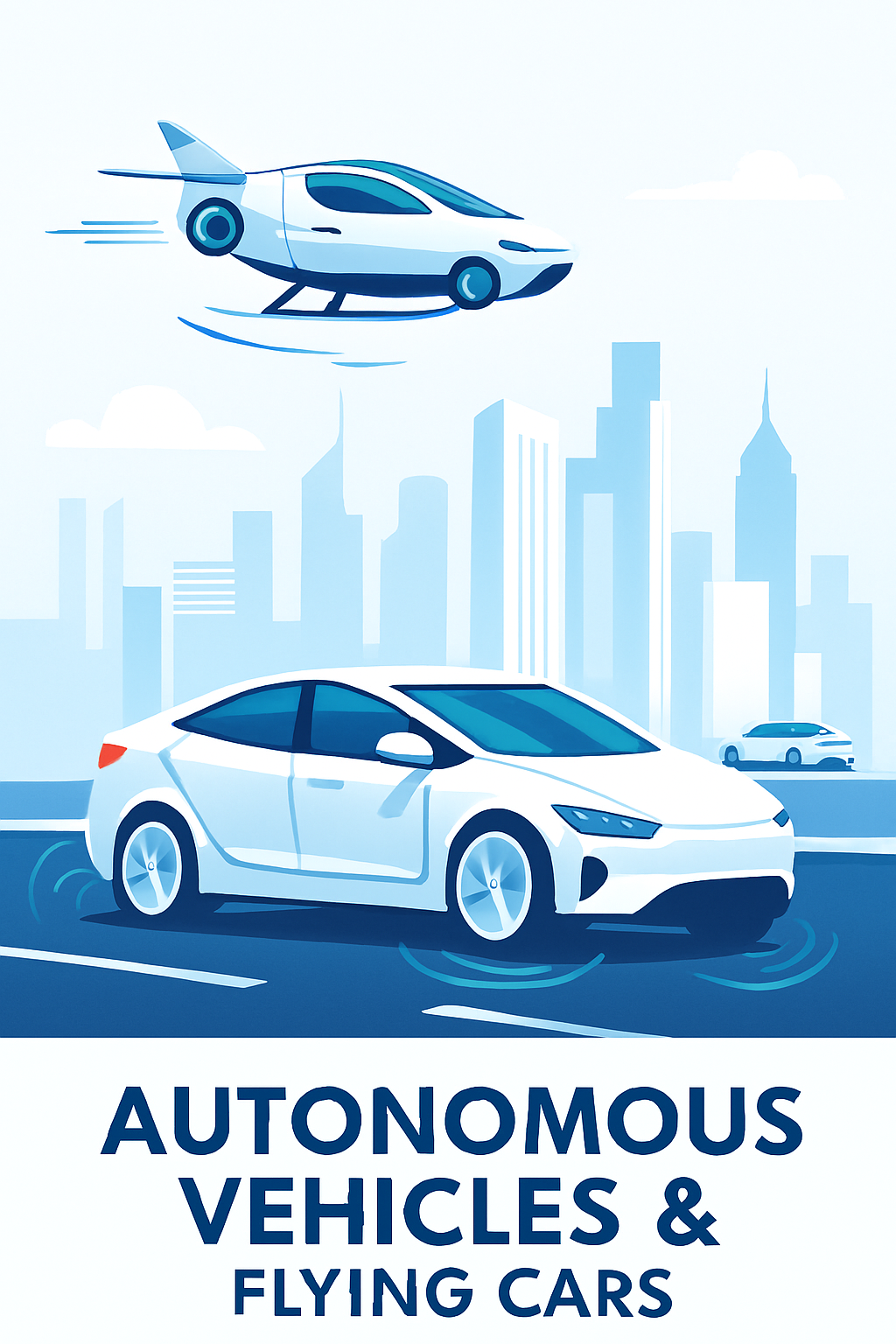The transportation industry is undergoing a seismic shift. From self-driving cars navigating city streets to flying vehicles promising to bypass traffic altogether, the future once imagined in sci-fi films is rapidly becoming reality. In this article, we’ll explore the rise of autonomous vehicles and flying cars, their underlying technologies, benefits, challenges, and what they mean for the future of urban mobility.
🔍 What Are Autonomous Vehicles?
Autonomous vehicles (AVs), also known as self-driving cars, are equipped with advanced sensors, cameras, radar, and artificial intelligence (AI) to navigate without human intervention. These vehicles use real-time data and machine learning algorithms to detect obstacles, follow traffic rules, and make split-second decisions.
Key Technologies Behind AVs:
- LiDAR and Radar: For mapping surroundings and detecting objects.
- Computer Vision: Enables recognition of traffic signs, pedestrians, and other vehicles.
- AI & Machine Learning: Powers decision-making and route optimization.
- GPS & Connectivity: Ensures accurate navigation and real-time updates.
🚀 Flying Cars: From Concept to Reality
Flying cars, or electric vertical takeoff and landing vehicles (eVTOLs), combine the agility of drones with the functionality of automobiles. Designed for short-range urban travel, these vehicles aim to reduce congestion and revolutionize commuting.
Leading Innovations in Flying Cars:
- eVTOL Technology: Enables vertical takeoff and landing, ideal for urban environments.
- Electric Propulsion: Reduces emissions and noise pollution.
- Autonomous Flight Systems: Some models are being developed with autopilot capabilities.
- Smart Infrastructure: Integration with air traffic control and urban planning.
🌟 Benefits of Autonomous Vehicles & Flying Cars
1. Enhanced Safety Over 90% of road accidents are caused by human error. AVs can drastically reduce collisions by eliminating distractions and fatigue.
2. Reduced Traffic Congestion Autonomous systems optimize routes and maintain consistent speeds, improving traffic flow. Flying cars can bypass ground congestion entirely.
3. Environmental Impact Electric AVs and eVTOLs produce fewer emissions, contributing to cleaner air and reduced carbon footprints.
4. Accessibility Self-driving cars offer mobility solutions for the elderly and disabled, while flying cars can connect remote areas with urban centers.
5. Time Efficiency Flying cars can cut commute times dramatically, especially in densely populated cities.
⚠️ Challenges to Overcome
1. Regulatory Hurdles Governments must develop frameworks for licensing, safety standards, and airspace management.
2. Infrastructure Development Flying cars require vertiports, charging stations, and integration with existing transport systems.
3. Public Trust Widespread adoption depends on consumer confidence in safety and reliability.
4. Cybersecurity Risks Autonomous systems are vulnerable to hacking and data breaches, necessitating robust security protocols.
5. Cost & Scalability High development and manufacturing costs may limit accessibility in the early stages.
🌍 Global Progress & Industry Leaders
Autonomous Vehicles:
- Tesla: Pioneering semi-autonomous driving with Autopilot.
- Waymo (Alphabet): Operating fully autonomous taxis in select cities.
- Cruise (GM): Testing AVs for urban deployment.
Flying Cars:
- Joby Aviation: Developing eVTOLs for commercial air taxi services.
- Volocopter: Focused on urban air mobility in Europe and Asia.
- Archer Aviation: Partnering with airlines for future air travel solutions.
🔮 What the Future Holds
The convergence of AI, 5G connectivity, and sustainable energy is accelerating the evolution of transportation. Experts predict that by 2035, autonomous vehicles will dominate urban roads, and flying cars will begin commercial operations in select cities.
Urban Mobility Will Be:
- Multimodal: Combining AVs, flying cars, and public transit.
- Smart & Connected: Real-time data sharing between vehicles and infrastructure.
- Sustainable: Powered by renewable energy and optimized for efficiency.
📝 Final Thoughts
Autonomous vehicles and flying cars are not just futuristic fantasies—they’re tangible innovations reshaping how we move. While challenges remain, the potential benefits for safety, efficiency, and sustainability are too significant to ignore. As technology matures and regulations catch up, we’re on the brink of a transportation revolution.
